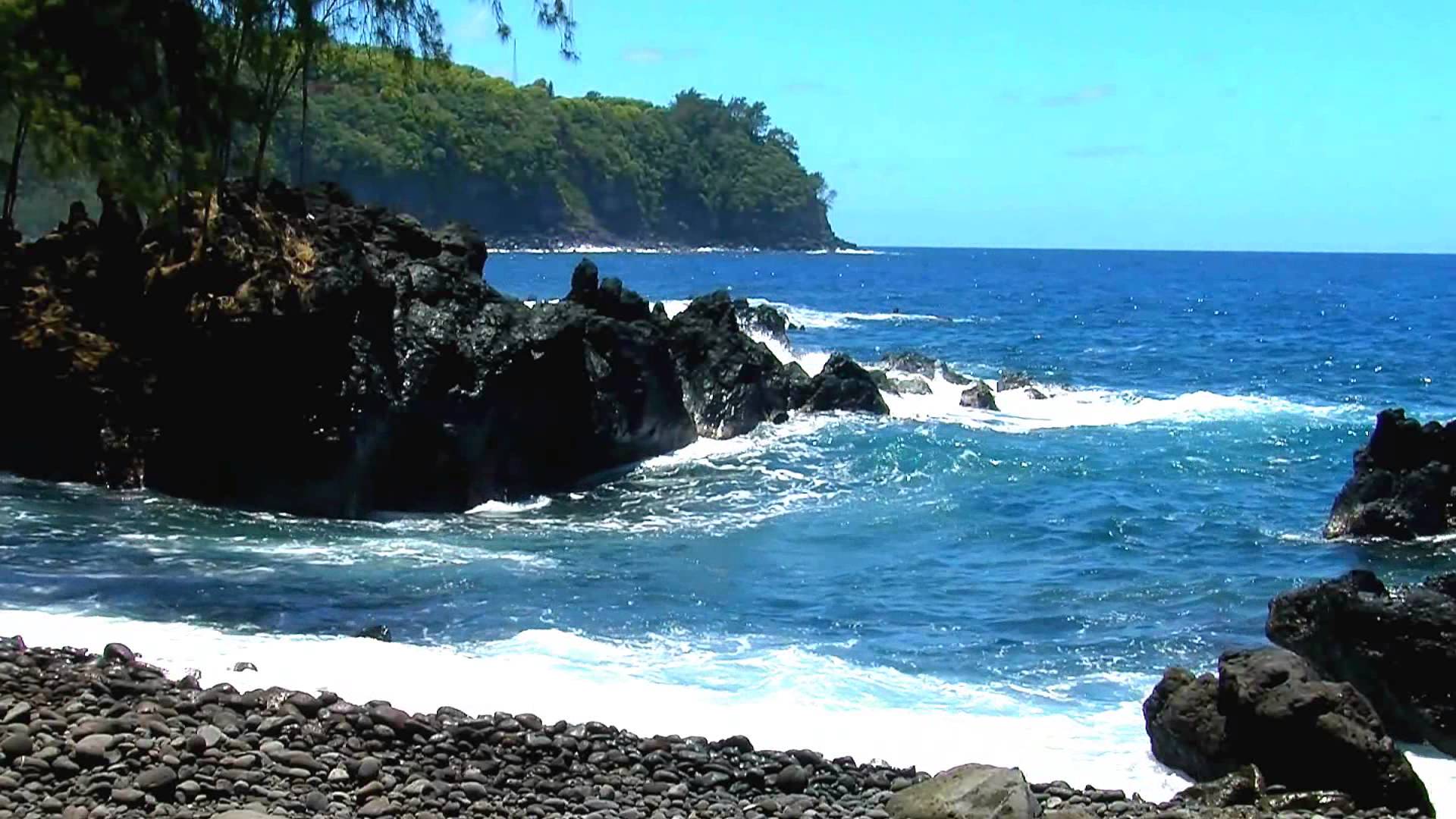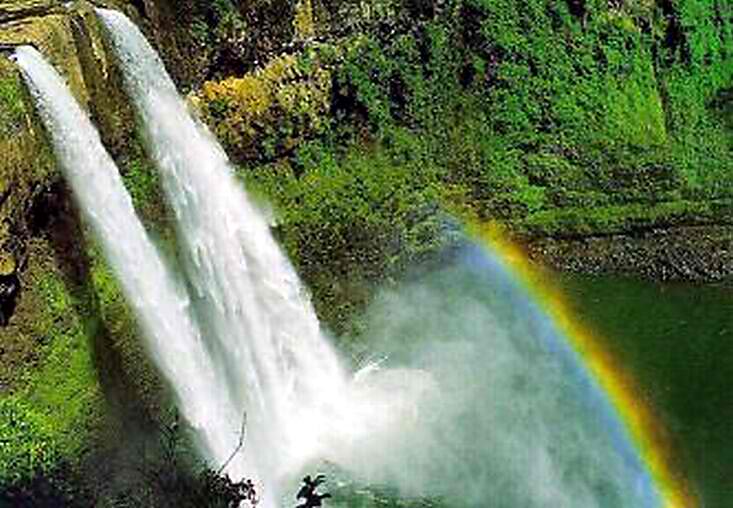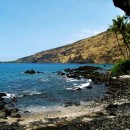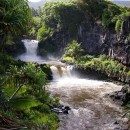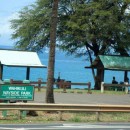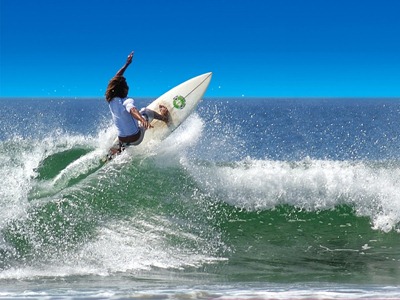 Because of its numerous active volcanoes, beautiful beaches, natural wonders and tropical climate, Hawaii remains one of the most visited travel destinations in the world. Aside from being the youngest of the 50 U.S. states, here are other interesting facts and trivia about the Aloha State that makes it a truly unique tourism destination worthy of a visit.
Because of its numerous active volcanoes, beautiful beaches, natural wonders and tropical climate, Hawaii remains one of the most visited travel destinations in the world. Aside from being the youngest of the 50 U.S. states, here are other interesting facts and trivia about the Aloha State that makes it a truly unique tourism destination worthy of a visit.
The name Hawaii is derived from the Proto-Polynesian hawaiki, which means "place of the gods" or "homeland."
The Hawaiian state is consisted of eight main islands, namely: Niihau, Kauai, Oahu, Maui, Molokai, Lanai, Kahoolawe and the Big Island of Hawaii.
The eight horizontal stripes on Hawaii’s flag represent each of the state’s main islands. In the upper-left corner of the flag is a small version of Britain’s flag which honors British captain George Vancouver, who gave Hawaii its first flag in 1794.
Hawaii is the most isolated population center on the face of the earth. Hawaii is 2,390 miles from California; 3,850 miles from Japan; 4,900 miles from China; and 5,280 miles from the Philippines.
Hawaii is the only US state that grows coffee.
Hawaii is the largest supplier of pineapples. More than one-third of the world's commercial supply of pineapples comes from Hawaii.
The Hawaiian alphabet is consisted of only 12 letters:
Vowels: A, E, I, O, U
Consonants: H, K, L, M, N, P, W
From east to west Hawaii is the widest state in the United States.
The Hawaiian Islands are the projecting tops of the biggest mountain range in the world.
The islands of Hawaii are formed by under-sea volcanoes that erupted thousands of years ago.
The Hawaiian Archipelago consists of over 130 scattered points of land stretching some 1,600 miles in length from the Kure Atoll in the north to the Island of Hawaii in the south.
The first Asian American ever elected as a United States senator was Hiram Fong, a Hawaiian with Chinese ancestry.
Hawaii has its own time zone, the Hawaiian Standard Time, which runs two hours behind Pacific Standard Time and five hours behind Eastern Standard Time.
There are four counties in Hawaii (Kauai; city and county of Honolulu; Maui; and Hawaii). Each city has a mayor and council in charge.
There are no racial or ethnic majorities in Hawaii. Everyone is a minority. Caucasians (Haoles) constitute about 34%; Japanese-American about 32%; Filipino-American about 16% and Chinese-American about 5%.
The Waialua River is one of five navigable river in Hawaii. It drains off Waialeale Mountain, which averages 488 inches of rain per year and is considered the wettest spot on earth.
The Waimea, the Hanape'pe, the Lumahai and the Hanalei River are almost as big and quite navigable. The Hanalei River was dedicated a "national treasure" recently and is under government protection from use as a "place of business".
Honolulu is the largest city in the world -- at least it has the longest borders. According to the state constitution any island (or islet) not named as belonging to a county belongs to Honolulu. This makes all islands within the Hawaiian Archipelago, that stretch to Midway Island (1,500 miles northwest of Hawaii) part of Honolulu. Honolulu is about 1,500 miles long or more distance than halfway across the 48 contiguous states.
Honolulu is the nation's 11th largest metropolitan area.
More than 100 world-renowned beaches ring Honolulu.
Iolani Palace is the only royal palace in the United States.
Oahu is home to the world's largest wind generator. The massive windmill has two blades 400 feet long on the top of a tower twenty stories high.
The island of Oahu, home to one-third of Hawaii's best surfing beaches, is the most visited island in the state. It also boasts of other popular attractions such as the Haleakala Crater, the old whaling town of Lahaina, the road to Hana, and Kaanapali Beach.
Haleakala Crater is the largest dormant volcano in the world.
Molokai is known as the most Hawaiian Isle.
Molokai Ranch Wildlife Park is home to rare African and Indian animals.
Kalaaupapa was once a leper colony administered by Father Damien, one of two Catholic saints who hailed from Hawaii. The other one is Saint Marianne of Molokai.
The oldest Catholic Cathedral in the United States is the Cathedral of Our Lady of Peace in Honolulu, built in 1843.
The Island of Lanai is hoe to the world's highest sea cliffs, Hawaii's longest waterfall, and the largest white sand beach in the state. It is also considered Hawaii's most secluded.
Hulope Bay is a marine preserve and considered one of the best diving spots in the world.
The Big Island is Hawaii's largest at 4,038 square miles. It is twice the size of all other Hawaiian Islands combined.
The Parker Ranch near Kamuela has about 480,000 acres of land and is considered as the largest contiguous ranch in the United States.
At 800,000 years the Big Island is the youngest of the island chain. However, it was the first island discovered by voyaging Polynesians.
Kilauea Iki volcano is the world's most active and largest volcano.
Mauna Kea is the tallest mountain in the world (measured from its base at the ocean floor).
Current American president Barack Obama was born in Hawaii and is the only president elected from outside the continental United States.
Hawaii is the only state in the nation to have an increasing land area, courtesy of the never ending volcanic eruptions.
Mauna Loa’s hardened lava fields so resembles the surface of the moon, that astronauts trained there for moon voyages in the 1960s.
Hawaii is the only state to honor a monarch, celebrating King Kamehameha Day on June 11th since 1872. Kamehameha is known for uniting the Hawaiian Islands in 1810.
Surfing, the water sports that has become synonimous with Hawaii, was invented by Polynesians who first settled in Hawaii thousands of years ago. Originally called called heenalu, the first surfing boards weighed more than 150 pounds and measured up to 20 feet.
Only two types of mammals are native to Hawaii: the hoary bat and the monk seal.
Park rangers at Hawaii National Park receive packages every year from tourists who have taken volcanic rocks from Kilauea. The tourists claim that the rocks were bad luck from Pele, the goddess of fire, lightening, dance, volcanoes, and violence.
The popular T.V. series Lost is shot in Hawaii. At the end of the credits is a note thanking the “people of Hawaii and their Aloha Spirit.”

